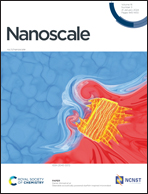A shadow enabled non-invasive probe for multi-feature intelligent liquid surveillance system†
Abstract
Liquid detection probes used to identify the features of liquids show great promise in a variety of important applications. However, some challenges, such as sample contamination by direct contact with the liquid, the requirement of additional signal emitters, and complex fabrication, hindered the development of liquid detection probes. Here, we developed a non-invasive shadow probe (SP) for a multi-feature intelligent liquid surveillance system (ILSS). The self-powered SP with the working mechanism of the shadow effect can detect the features of liquids by analyzing the variations of liquid shadows such as the area, wavelength, and brightness. The exact resolution (5 different colors, 6 different concentrations, 6 different levels, 100% accuracy) and fast response time (0.2 ms) are shown by the SP under ambient light conditions (even in 0.003 sun). The ILSS, which integrated the SPs with signal processing circuits and applied the artificial intelligence (AI) technique, successfully detects and synoptically learns about liquids simultaneously. The in-real time ILSS reaches a test accuracy of 99.3% for 10 types of liquids with multiple features. This work showcases a promising solution for non-invasive multi-feature liquid detection, displaying great potential for future applications.



 Please wait while we load your content...
Please wait while we load your content...